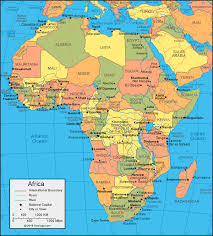What’s happening to the numbers in Africa?

The Africa Centres for Disease Control and Prevention (CDC) has talked of a “second wave” arriving.
We’ve been looking at the data to see what’s happening.
Where are cases on the rise?
Cases have been rising gradually since late September, according to data from both the Africa CDC and the World Health Organization (WHO).
Looking at new weekly cases over the past month, they have gone up by an average of 3.5% each week.
But there are significant variations across the continent, with some countries seeing small or localised spikes, others witnessing more sustained increases and some not yet past an initial rise in cases.
South Africa now accounts for more than 60% of daily new cases detected in sub-Saharan Africa.
There’s been a clear, but uneven “resurgence in transmission ” across the sub-Saharan region, according to Prof Martin Prince of King’s Global Health Institute in London.
Why are cases rising in South Africa?
After a decline in reported cases for four months, the government is now talking of a second wave.
The country’s health ministry says most of the new infections have been amongst those aged between 15 and 19 years.
This is believed to be due to a large number of big celebrations in recent weeks, some of them held to mark the end of exams and of the academic year.
Top South African infectious diseases expert Prof Salim Abdool Karim told the BBC: “Some establishments serving alcohol were having very large functions in the evening with over a thousand people, in clear violation of the rules.”
Four provinces – Western Cape, Eastern Cape, KwaZulu Natal and Gauteng Province – are the ones most affected by the resurgence in cases.
Covid-related deaths in South Africa have increased by 19% in the four weeks up to 6 December, according to the Africa CDC.
The government has announced new restrictions, such as closing some beaches and limiting the times during which alcohol can be sold.



